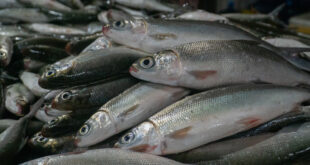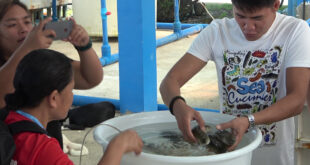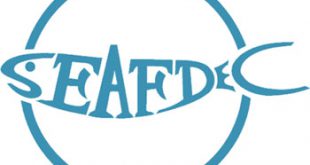| Abalone: feed, mark, let go |
| A safer and easier way of tagging abalone for stock enhancement is feeding them a formulated diet |
| In the wild, abalone population has been declining. One way of replenishing this is through stock enhancement in marine reserves, sanctuaries or other protected areas. One way of determining the activity’s success is by monitoring tagged abalones after they are released in the wild. And therein lies the problem: the lack of effective tagging or marking methods.
Ideally, tags used in stock enhancement should be able to mark small individuals, detectable in other life stages, is unique to the local population, and suitable for identification of individuals from particular releases. Tags should also be inexpensive to apply and detect, could be transmitted to subsequent generations, should not harmful to the tagged abalone and people, and acceptable to the public.
Wenresti Gallardo and his colleagues at SEAFDEC/AQD studied the ways to meet the above-mentioned requirements. While they have noted that tagging methods for abalone exist, these were usually labor-intensive and either results in irritation to the abalone or the loss of tags. One possible alternative to existing methods is diet-tagging, an idea that came up when they saw green bands on abalone that had been fed formulated feeds in the hatchery. Wild stocks do not have such bands, and the only difference between wild and hatchery-held abalone was their diets.
In their research, they fed abalone juveniles daily with a SEAFDEC-formulated diet at 5% of body weight, After three weeks, when a bluish-green shell band was observed, the abalone were given Gracilaria bailinae for two months to produce the normal brownish shell after the bluish-green band. The control setup was fed only with liberal servings of G. bailinae. Abalone were then stocked in outdoor tanks and in a marine reserve to observe any color changes in the shells.
Eighteen months after, the researchers noted that the bluish-green band in abalone fed formulated diets remained distinct, and they could be distinguished from the seaweed-eating abalone in both the outdoor tank and marine reserve habitats. This could be due to the presence of pigments in some of the ingredients of the formulated feed.
Diet-tagging is a step in the right direction for researchers and stakeholders intent on determining the success or failure of abalone stock enhancement efforts. Although it could take some time, this method is perhaps the most painless procedure for the abalone, who need the least amount of stress in their new habitats.
Read more from the journal Aquaculture Research (2003) 34: 839-842. |
Check Also
2024 Releases
January-February 2024Download here — File Size: 6.85 Mb November-December 2023Download here — File Size: 16.97 …
 SEAFDEC/AQD Southeast Asian Fisheries Development Center | Aquaculture Department
SEAFDEC/AQD Southeast Asian Fisheries Development Center | Aquaculture Department



